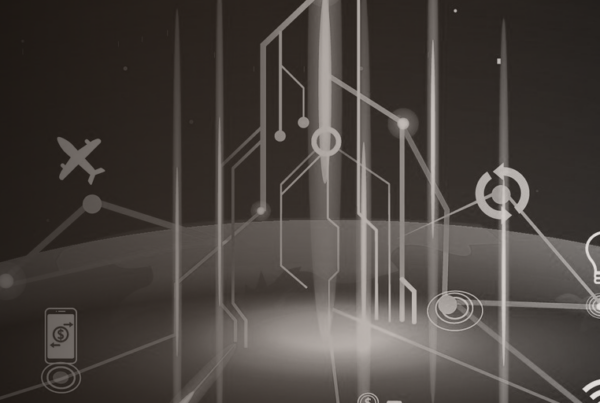Premise
Through this paper: Value Silos, we look to highlight how information – upon which the Internet of Things will potentially thrive – is becoming so redundant that the condition threatens the very possibility of the Internet of Things. This redundancy of information may become so tremendous that it may ultimately result in Value Silos and render it of very little use..
We look to present the idea of Value Silos as a challenge faced by the end-user in the current, and the coming, digital age of the next decade. Value Silos faced by the users are much like the Data Silos that enterprises face, wherein there are huge amounts of data lying across different functions that does not interact with other systems. So users have their data spread across their different systems: e.g, their social media accounts, work emails, banking accounts, various life, health or car insurance accounts and so on, and in the absence of a universal interface, the value (information) becomes siloed.
What we face: The current software development paradigm is getting increasingly swamped by overabundance. If the current ‘fragmentation paradigm’ was to be looked at in terms of all the silos as a programmer, it would be seen that there exist largely redundant functionalities. Every day, millions of developers around the world are rebuilding software functionality that already exists and can be reused. Imagine if every time the government needed a warehouse, it built a new one instead of using an existing one! That’s what we face in software.
Let us also look at things from the end-user’s perspective. Users are inundated with a deluge of valuable software, but because it is all disconnected and disjointed, they are not able to derive value from integration.There is too much data out there and what users need is organization of it for selective consumption.
So, the technology problem we face today is two-fold:
- Developers have more options for delivering solutions than ever before, however that is the problem: as it is resulting in redundant development;
- End users receive more information than ever before, and they are demanding even more, which is resulting in the creation of redundant interfaces and unorganized-data overgrowth: Value Silos.
The current challenge: The challenge that we are up against now is that we are witnessing a paradigm shift. The current technology landscape is drifting and looking at a completely new horizon. There is great transformation taking place in the existing IT delivery models and cutting edge technology promises to change the way we currently consume IT and interact via technology. This will occur in the form of billions and billions of connected devices and embedded software integrated into objects that never interacted via the internet before. With growing information and growing software and hardware devices,the already redundant software development ecosystem will inevitably become unscalable as a result of Value Silos.
The Fundamental challenge
As published in a blog by Forbes magazine, if the IoT estimates are correct then we will soon be living a world along with 50 billion interconnected devices within the next 5-10 years. No one, however, seems to be talking about the data that will need to be processed from all these devices, sensors, and monitors[1]. Businesses will need to recognize the challenge associated with the explosive growth of data that will require new and advanced ways of analytical processing.
Some start-ups are moving forward with innovative solutions to address the critical challenges that IoT Big Data will pose. But the way we see it, however, the primary challenge is being completely ignored. The primary challenge actually lies in the way software is developed in the first place. Imagine if software functionality could be available to developers at the start, so they wouldn’t have to redevelop functionality that actually already exists in some other form. If the software development and delivery mechanism evolves from being the way it is now and as a result, users are able to have access to a more unified interface for performing their various functions, wouldn’t that reduce redundancy massively? Wouldn’t that help organise the data better and save users from getting lost in a mesh of countless devices, interfaces, log-ins and so on?
Will a billion devices consistently performing a trillion different functions, there is going to be such tremendous amounts of data that going back and forth between producers (people or users) of the data and businesses (marketers and information managers) who want to analyse this data to be able to sell better services to people or users that a very large portion of that data will remain underutilized. Users will not be able to make use of such data under the burden of increasing value silos.
What if we could directly address the core issue – the primary source at which information is created. If information and functionality could be produced in such a way that developers do not have to rebuild functionality that already exists and users do not have to provide the same information over and over across different formats, devices, portals, interfaces and so on, would the the Value remain consistent? The way software functionality is built right now, redundancy is paramount and if it continues at the current rate, fueled by proliferation of billions of additional devices, it will end up in creating absolute Value Silos for the users.
To address this critical challenge, allowing data to grow exponentially, and letting redundancies in software development and sharing to continue to exist and expand, is like taking an anti-pattern approach to the problem. Back in the 90s, through the late 2000s, data silos became a critical challenge faced by enterprises, but now they are faced with data silos of a massive scale. And now, users are faced with the same problem that enterprises have been facing for over 20 years.
To prevent Value Silos from occurring, that is, to protect the Value in software functionality, it is critical to eliminate redundancies at the very foundational level of software programming.
What if there was a universal framework that was available to everyone in the developer’s community and functionality was built just one time instead of redoing all the work over?
If we could capture all the data, content, communications, and the digital functionality we associate with it into one digital sphere, it would result in more unified information creation. That would ultimately result in making software development more efficient and productive, while preventing users from the onslaught of redundant information.
Citations
- Forbes: “Collecting Big data from IoT”.http://www.forbes.com/sites/robertvamosi/2015/01/22/collecting-big-data-from-iot/ Accessed: Monday Feb 16th, 2015



























